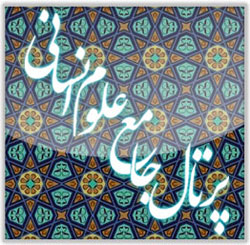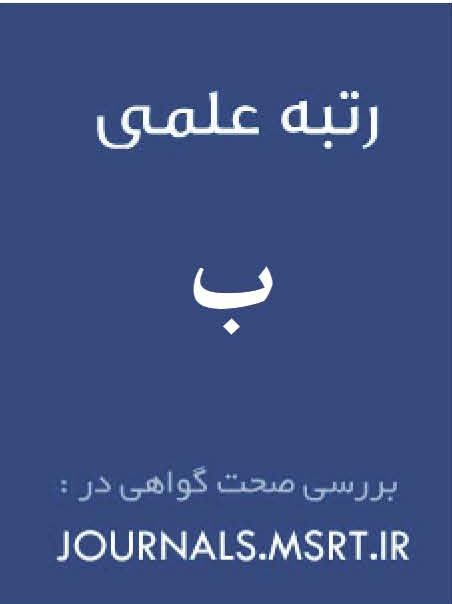A Comparative Study of the Interpretive Methods of Allameh Tabatabaei and Fakhr al-Din al-Razi with a Focus on the Miraculous Nature of the Qur’an
Keywords:
Allameh Tabatabaei, Fakhr al-Din al-Razi, Qur’anic Exegesis, Qur’an’s Miraculous Nature (Iʿjāz al-Qurʾān), Interpretive MethodologyAbstract
The issue of the Qur’an’s miraculous nature (iʿjāz al-Qurʾān) is one of the most significant topics in Qur’anic sciences and Islamic theology, holding a central place in establishing the prophethood of the Prophet of Islam. However, what bears fundamental importance is the manner in which this miraculous nature has been understood and interpreted within the exegetical tradition of Islam. As one of the foundational theological and Qur’anic concepts, iʿjāz has drawn attention not only from linguistic and rhetorical perspectives but also from epistemological, philosophical, and interpretive dimensions. Two of the most prominent exegetes who have engaged deeply with this issue are Imam Fakhr al-Din al-Razi, the eminent Sunni theologian and exegete, and Allameh Muhammad Husayn Tabatabaei, one of the most distinguished Shi‘a scholars and commentators of the Qur’an. This study, based on a descriptive–analytical and comparative approach, examines the interpretive methods of Fakhr al-Razi and Tabatabaei with a focus on their methodological principles in explaining the miraculous nature of the Qur’an. The comparison emphasizes the logic underlying their interpretive methodologies, their epistemological foundations, and their respective approaches to the concept of iʿjāz. The primary aim is to extract the intellectual and exegetical frameworks of each scholar regarding the Qur’an’s miraculous nature and to analyze how their theological, philosophical, and interpretive orientations influenced their explanation of iʿjāz in their works. The findings indicate that Fakhr al-Razi, in his Tafsir al-Kabir (The Great Commentary), approaches the subject from a theological perspective, exploring iʿjāz through discussions such as the possibility of imitation (muʿāraḍah), eloquence (balāghah), and divine omniscience. His method is analytical, argumentative, and characterized by the inclusion of multiple viewpoints. In contrast, Allameh Tabatabaei, the philosopher–exegete of the modern era and a representative of the rationalist Shi‘a school, in his al-Mīzān fī Tafsīr al-Qurʾān, while elucidating the various dimensions of iʿjāz, pays special attention to the inner structure and conceptual coherence of the verses. He perceives the Qur’an’s miraculous nature not merely at the level of expression and language but also in its layers of meaning, guidance, and intellectual system. Moreover, Tabatabaei treats iʿjāz as a semantic and guiding system rather than a purely theological construct, whereas Fakhr al-Razi, adopting a dialectical and persuasive approach, seeks to affirm iʿjāz within the framework of theological argumentation.
Downloads
References
Alavi Mehr, H. (2002). Exegetical Methods and Trends. Osveh.
Ali Mohammadi, A., Baqer, A., & Valavi, S. (2021). How Fakhr al-Razi Utilized the Al-Nazm Theory in Mafatih al-Ghayb; Case Study of Surah Al-An'am. Journal of Exegesis and Quranic Language Research, 9(2), 91-103.
Babaei, A. A. (2012). A Study of Exegetical Schools and Methods. Hawzah and University Research Institute.
Fakhr al-Razi, A. M. i. U. (1990). Al-Muhassal. Dar al-Razi.
Fakhr al-Razi, A. M. i. U. (1999). Al-Tafsir al-Kabir. Dar al-Ilm.
Fakhr al-Razi, A. M. i. U. (2001). Mafatih al-Ghayb. Dar Ihya al-Turath al-Arabi.
Fallah Pour, M. (2014). The Foundations, Principles, and Exegetical Method of Mulla Sadra. Bustan-e Ketab.
Hojjati, M. B. (2007). A Study in the History of the Holy Quran. Office for the Publication of Islamic Culture.
Kermani, M. (1985). Al-Burhan fi Tawjih Mutashabih al-Quran (The Proof in Explaining the Ambiguous of the Quran). Dar al-Kutub.
Khorramshahi, B. (1998). Encyclopedia of the Quran and Quranic Studies (Vol. 2 vols.). Doustan; Nahid.
Mouaddab, S. R. (2011). Foundations of Quranic Exegesis. University of Qom Publications.
Naseh, A. A., & Esfandiari, F. (2016). A Comparative Study of the Theory of Quranic Comprehensiveness from the Perspective of Tafsir al-Mizan. Comparative Exegesis Research, 1(2), 33-54.
Rahimi, M. (2004). The Method of Quranic Exegesis. Hawzah and University Research Institute.
Rezaei Esfahani, M. A. (2003). Textbook on Exegetical Methods and Trends of the Quran. Al-Mustafa International University.
Shaker, M. K. (1997). Methods of Quranic Interpretation. Islamic Propagation Office.
Tabatabaei, S. M. H. (1996). Tafsir al-Mizan. Dar al-Fikr.
Tabatabaei, S. M. H. (2006). The Quran in Islam. Bustan-e Ketab.
Tabatabaei, S. M. H. (2008). Shia in Islam. Bustan-e Ketab.
Tabatabaei, S. M. H. (2013). The Miraculousness of the Quran. Allameh Scientific and Intellectual Foundation.
Downloads
Published
Submitted
Revised
Accepted
Issue
Section
License
Copyright (c) 2025 Moharram Abbasi, Mohammad Hassan Borhanifar, Faizollah Akbari Dastak (Author)

This work is licensed under a Creative Commons Attribution-NonCommercial 4.0 International License.







